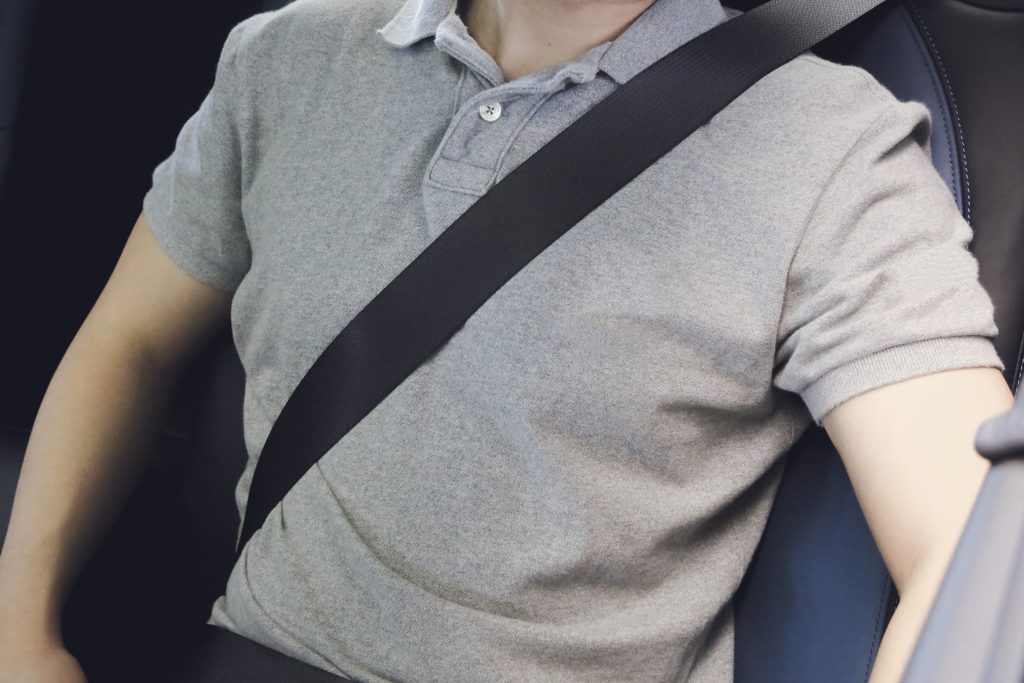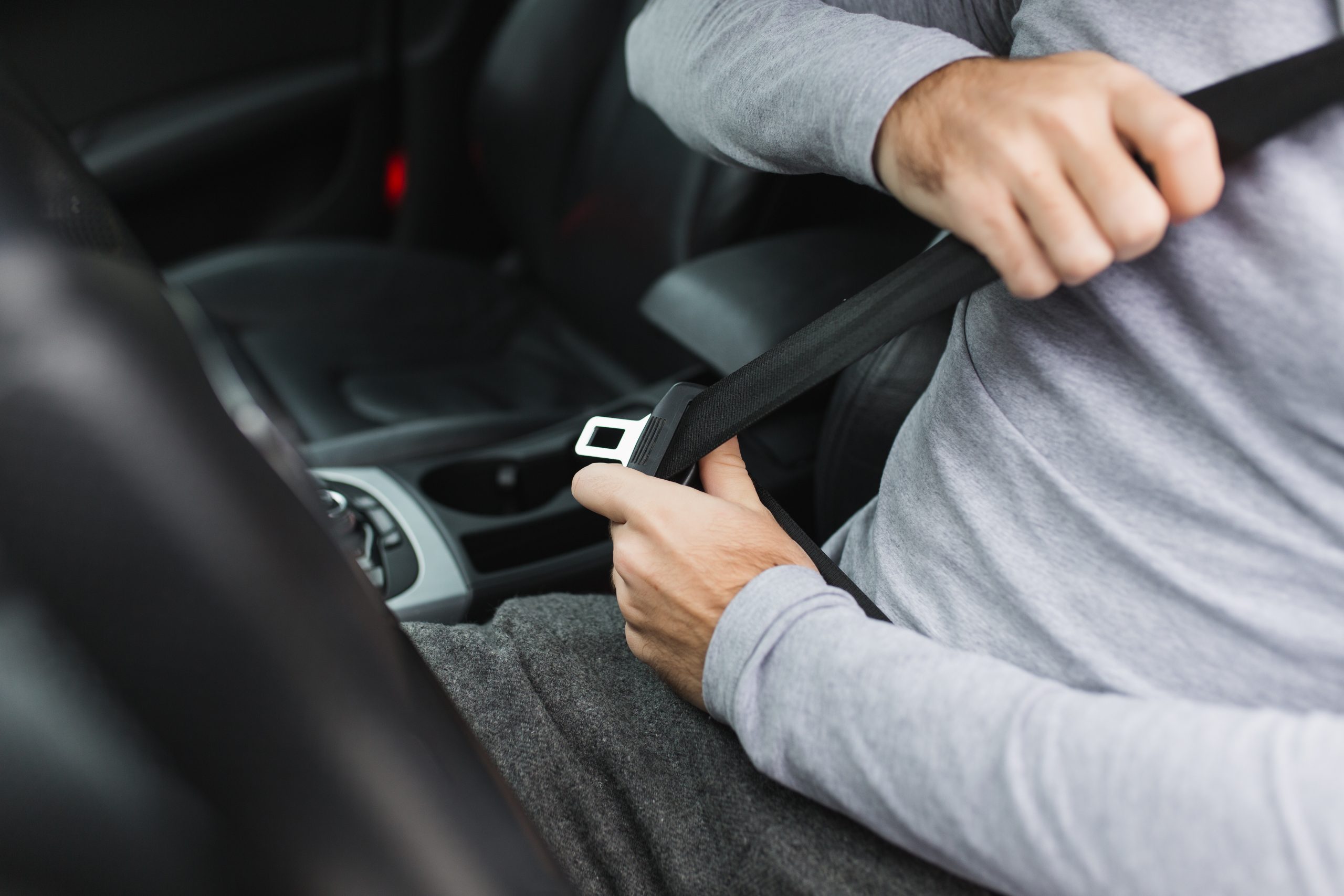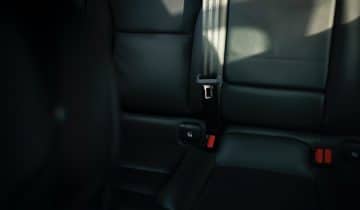You’ve probably felt the familiar smooth fabric of seat belt webbing each time you buckle up, but what are seat belts made of? The seat belt webbing must be strong enough to protect people in an accident while also being comfortable to wear, which creates restrictions on what fabrics can be used.
The majority of seat belt webbings are made using 100% polyester. This material has recently become popular due to its durability and firmness, surpassing nylon as the most popular material for seat belts. In this article, we’ll look at everything you need to know about the polyester material seat belts are made of.
What Are Seat Belts Made of?
Most seat belts are made of 100% polyester. The material is tightly woven into an incredibly dense fabric, making it extremely strong and long-lasting. The seat belt webbing typically has a tough hem on the edge to prevent fraying.
In the past, nylon was the most popular material for seat belts. Unfortunately, the material wasn’t ideal. It was much stretchier than desired, had a lower tensile strength than polyester, and was significantly more prone to wear and tear. Once the qualities of polyester were noticed, it quickly replaced nylon as the most popular material.
Why Are Seat Belts Made of Polyester?
Seat belts are made of polyester because of the material’s incredible tensile strength. Since the polyester yarn is less energized than most alternatives, it can be woven into densities of up to three hundred warp threads per 46mm belt.
While the average tensile strength varies depending on how the seat belt webbing is made, 1” polyester seat belt webbing can have as much as 2,000 lbs in tensile strength — over 25% more than comparable 1” nylon seatbelt webbing. This makes it ideal for automotives since even extreme forces won’t stop the seat belt from safely holding passengers in place.
Aside from the shift to using polyester, the technology for making better seat belts has evolved in many ways. When seatbelt webbing manufacturers started to use needle looms instead of shuttle looms to produce the webbing, they were able to weave over five times more picks per minute — up to 1,000 per minute.
This loom efficiency improvement significantly improves manufacturers’ ability to make durable seat belts, and it’s only continued to improve. Currently, most looms used by seat belt webbing manufacturers can weave up to 3,000 picks per minute. As a result, modern seat belts are much denser and significantly more durable.
How Strong Are Seat Belts?
Modern polyester seat belts are incredibly strong, as they need to handle thousands of pounds of force without breaking to protect passengers. The average force experienced by passengers in a suddenly stopped car is incredibly high. For example, if a person weighing 100 lbs hits a rigid object and comes to a complete stop at 40mph, they’ll experience around 2.7 tons of force. That’s a lot for a seat belt to have to handle!
There are a few ways seat belts reduce the hazard for passengers. They generally have a slight stretch but must be rigid enough to survive a car crash. This slight stretchiness increases the distance the passenger travels before the collision, reducing the force they experience when they stop.
Aside from reducing the force passengers experience in a crash, the most crucial role of seat belts is to hold passengers in place no matter what happens. They distribute the remaining forces across the passenger’s body evenly, reducing the probability of injuries. They also prevent the passenger from hitting the dashboard or being ejected from the car entirely.
Why Are Seat Belts Important?
Seat belt use is essential because they protect both the driver and the passengers of a vehicle from injury in an accident. When a car crashes and comes to a complete stop, the momentum from the car’s movement is immediately applied as a force to the passengers. If they aren’t buckled up, this can cause the passengers to be thrown against the dashboard or ejected from the vehicle, potentially causing severe injury or death.
Seat belts can significantly reduce the risk of injury or death from a car accident by holding passengers safely in place. To prevent the force of a crash throwing passengers against the dashboard or out of the vehicle, seat belts diffuse the force across the passenger’s body in a way that has the lowest risk of injury. In doing so, seat belts can reduce the risk of fatalities for front passengers by over 45%.
How Effective Are Seat Belts At Protecting Passengers?
Seat belts are highly effective at protecting passengers. According to the NHTSA, they can reduce the risk of fatalities by 45% and severe injury by 50% when used by front-seat passengers. Over 15,000 lives are saved yearly because people in accidents choose to buckle up.
Unfortunately, people who choose not to wear seat belts are drastically overrepresented in the injuries and fatalities caused by car accidents. While only around 10% of Americans decide to forgo their seat belts, over half of those who died in car accidents in 2017 chose not to wear their seat belt.
Wearing your seat belt is as simple as reaching over and buckling up, so there’s no good reason not to wear a seat belt. Wearing your seat belt is one of the easiest and most effective things you can do to make driving safer.
If you ever need to make “just a short drive,” it’s essential to constantly remind yourself that losing a few seconds to buckle up is always better than losing an entire lifetime. Even if your seat belt webbing is broken, replacing it is as simple as contacting Safety Restore technicians.
Final Thoughts: The Importance of Seat Belts
While the laws about wearing a seatbelt whenever you’re on the road might seem like arbitrary rules, buckling up is one of the best ways to protect yourself from a fatal injury in the case of a car accident.
Considering how effective seat belts are, it’s hard not to wonder how their material accomplishes this! We hope this article helped you learn everything you need to know about the material seat belts are made of.



